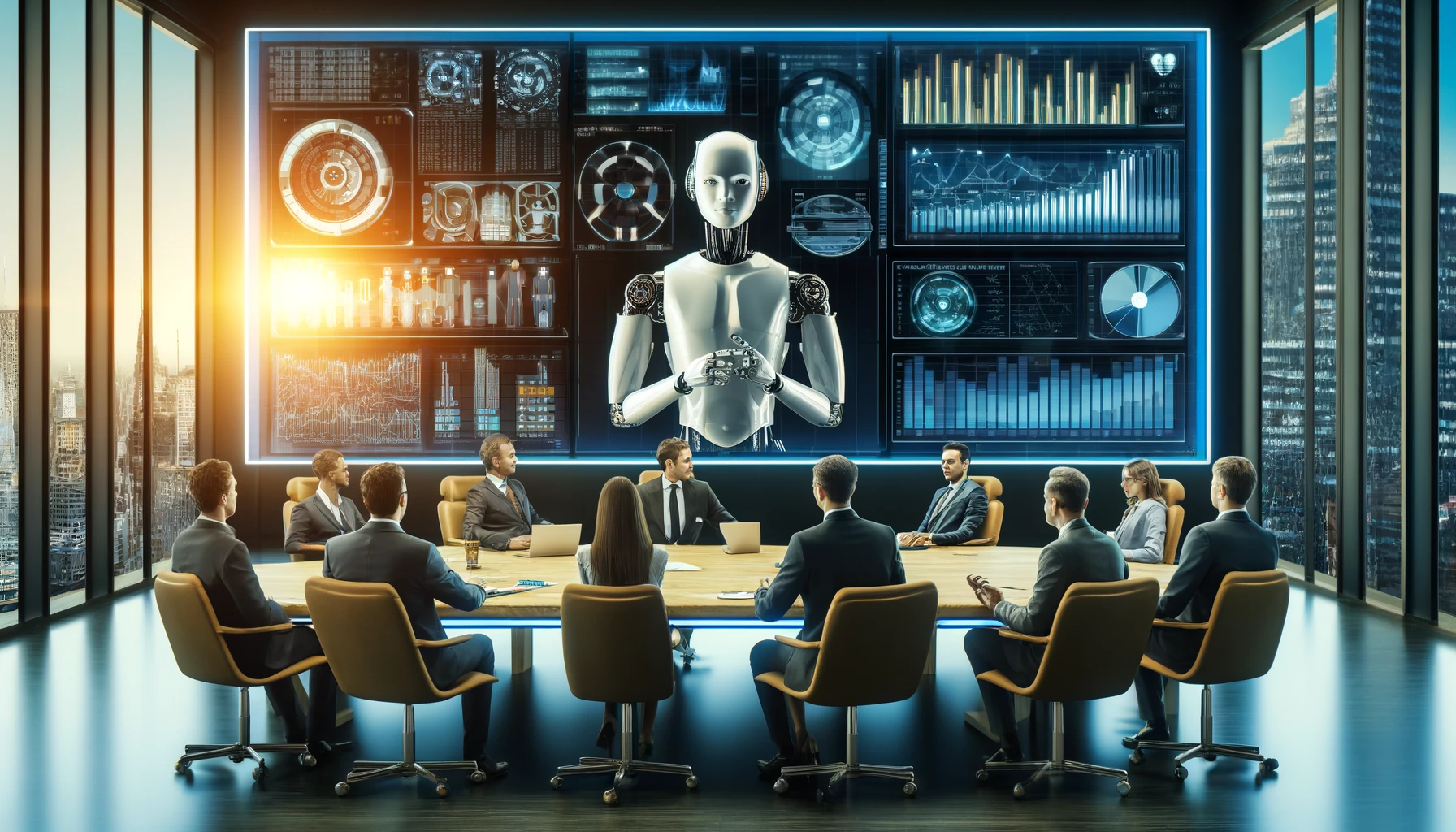As artificial intelligence (A.I.) continues to reshape workplaces, one group of workers that might face significant disruption is chief executives. A.I. programs, known for making various jobs obsolete, could potentially replace CEOs, whose roles involve analyzing markets, identifying trends, and making decisions—all tasks that A.I. can handle efficiently. Given the high salaries of CEOs, companies have a financial incentive to consider A.I. replacements.
Several companies are already exploring this possibility. NetDragon Websoft, a Chinese online game company, appointed an A.I.-driven rotating CEO named Tang Yu in 2022. Tang Yu, personified as a woman, has even won awards for being an exceptional virtual employee. Another example is Dictador, a Polish rum company, which introduced an A.I. humanoid CEO named Mika in November. Mika emphasizes her ability to make unbiased and strategic decisions.
The concept of A.I. replacing human leadership is gaining traction among executives themselves. A survey conducted by edX, an online learning platform created by Harvard and MIT administrators, found that nearly half of the executives believed that most or all of the CEO role could be automated. Anant Agarwal, the founder of edX, was initially surprised by this result but later agreed that around 80% of a CEO’s duties could be performed by A.I.
The A.I. boom began in earnest in late 2022 with the release of ChatGPT by OpenAI. Since then, Silicon Valley has invested $29 billion in generative A.I., promoting it as a solution to many corporate problems. Companies struggling with leadership or those looking to cut costs might be the first to adopt A.I. in higher management roles.
However, the transition to A.I. leadership is not without challenges. Vinay Menon, who leads the global A.I. practice at Korn Ferry, pointed out that while A.I. can take on many leadership tasks, human accountability remains crucial. Machines cannot be held responsible for mistakes in the same way humans can. This issue was highlighted in a recent court case where Air Canada argued that it could not be held liable for promises made by its chatbot, a stance the court rejected.
Despite these challenges, the pandemic has prepared many workers for a future with A.I. leadership. Remote work and digital communication have become the norm, reducing the need for direct human interaction in managerial roles. Phoebe V. Moore, a professor of management at the University of Essex, noted that software for self-management could enhance worker agency, especially for those who are already self-motivated.
Historically, automation has posed risks to rank-and-file employees, benefiting investors and managers. Now, the trend is reversing. A.I. could democratize management roles, allowing more people to take on leadership positions without traditional skills. Agarwal compared this shift to the advent of calculators, which equalized numerical skills among people.
The fascination with robot bosses is not new. As early as 1939, science fiction stories depicted robot bosses in a negative light. Jack Ma, the former CEO of Alibaba, predicted in 2017 that robots would likely be recognized as the best CEOs within 30 years, citing their speed, rationality, and lack of emotional biases.
As companies continue to experiment with A.I. in leadership roles, the traditional concept of a human CEO might evolve. While A.I. can bring efficiency and cost savings, maintaining a balance with human accountability and oversight will be essential. The future might see a hybrid approach, where A.I. handles operational tasks while humans provide strategic direction and accountability.
This article is based on the following article:

Background Information
1. What is Artificial Intelligence (A.I.)?
Artificial Intelligence (A.I.) refers to the simulation of human intelligence in machines. These machines are programmed to think, learn, and solve problems like humans. A.I. systems use algorithms, which are sets of rules or instructions, to process data and make decisions. There are various types of A.I., including:
- Narrow A.I.: Designed to perform a specific task, such as voice recognition or internet searches. Examples include Siri and Alexa.
- General A.I.: This would perform any intellectual task that a human can do, but it remains theoretical and has not yet been achieved.
- Machine Learning: A subset of A.I. where machines improve their performance on tasks over time with experience.
- Deep Learning: A type of machine learning that uses neural networks with many layers. It is used in image and speech recognition.
2. The Role of a Chief Executive Officer (CEO):
The CEO is the highest-ranking executive in a company. Responsibilities typically include:
- Strategic Planning: Setting the company’s long-term goals and strategies.
- Decision Making: Making high-stakes decisions about the company’s direction.
- Leadership: Providing direction and motivation to other executives and employees.
- Communication: Representing the company to shareholders, the public, and regulatory bodies.
- Financial Management: Overseeing the company’s financial health, including budgeting and financial planning.
3. The Rise of A.I. in the Workplace:
Over the past few decades, A.I. has increasingly been integrated into workplaces to automate routine tasks, analyze data, and assist in decision-making processes. Notable advancements include:
- Automation: Robots and A.I. systems perform repetitive tasks in manufacturing, reducing the need for human labor.
- Data Analysis: A.I. analyzes large datasets quickly and accurately, identifying patterns and trends that humans might miss.
- Customer Service: Chatbots and virtual assistants provide customer support, handling inquiries and solving problems without human intervention.
4. The Impact of A.I. on Jobs:
The integration of A.I. has both positive and negative effects on employment:
- Job Displacement: Certain jobs, especially those involving routine tasks, are at risk of being automated, leading to job loss.
- Job Creation: New jobs are created in A.I. development, maintenance, and oversight.
- Job Transformation: Many jobs are changing to include new tasks that involve working with A.I. systems.
5. Ethical and Practical Considerations:
The implementation of A.I. in leadership roles raises several questions:
- Accountability: Machines cannot be held accountable for mistakes in the same way humans can.
- Bias: While A.I. aims to be unbiased, it can still reflect the biases present in the data it was trained on.
- Human Interaction: The role of human judgment, empathy, and creativity in leadership may not be fully replicable by A.I.
Please subscribe to Insight Fortnight, our biweekly newsletter!
